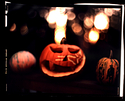Doremus Scudder
Member
Measuring spoons are calibrated and come in sets. They are not the spoons you use to eat with. They have metric volume equivalents that you can look up. Then you simply just use the appropriate volume of whatever powder the formula calls for when mixing your spoon recipe. That, however, takes the simplicity out of mixing things with spoon recipes. I use down-and-dirty spoon recipes for print developers, bleaches, etc. Dipping a measuring spoon into the jar, leveling it with the chemical spatula and then dumping it in the beaker is pretty fast compared to weighing things out. Many formulae don't need more precision than this. For those that do, I use my triple-beam balance scale or make percentage stock solutions.
So, for the OP: If you don't have a set of measuring spoons and want to make up the formula with spoon volumes often, I'd recommend you measure out the volumes and then weight them so you can mix the formula by weight next time. Pouring 15ml into and out of a graduated cylinder seems like a bother to me.
AgX:
Having grown up on the US West Coast, I learned cooking and baking by volumes; cups of flour, spoons of this and that. When I moved to Austria, I had to get used to weighing out my flour and other dry ingredients. I hadn't owned a kitchen scale before then. Still, lots of those German-language recipes called for spoon measures (Teelöffel, Esslöffel), so I'm sure you can find measuring spoons there. In fact, I'm sure I still own a set or two from my time in Vienna.
Best,
Doremus
So, for the OP: If you don't have a set of measuring spoons and want to make up the formula with spoon volumes often, I'd recommend you measure out the volumes and then weight them so you can mix the formula by weight next time. Pouring 15ml into and out of a graduated cylinder seems like a bother to me.
AgX:
Having grown up on the US West Coast, I learned cooking and baking by volumes; cups of flour, spoons of this and that. When I moved to Austria, I had to get used to weighing out my flour and other dry ingredients. I hadn't owned a kitchen scale before then. Still, lots of those German-language recipes called for spoon measures (Teelöffel, Esslöffel), so I'm sure you can find measuring spoons there. In fact, I'm sure I still own a set or two from my time in Vienna.
Best,
Doremus






